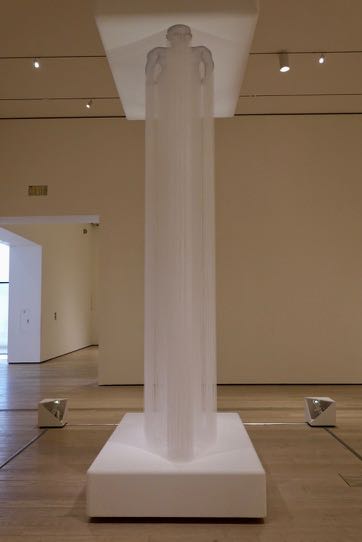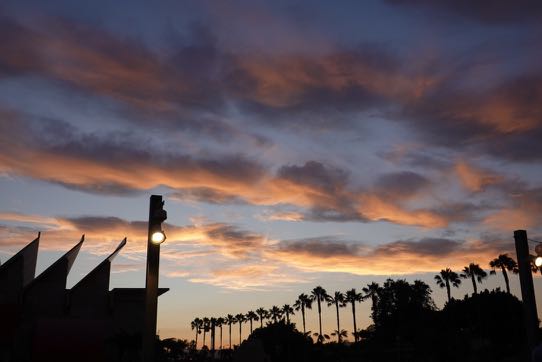
When visiting a museum with your kids, having a navigation plan is key. Often we get so focused on logistics (traffic, parking), that we arrive on campus without a clue where to begin.
So it’s useful to have a simple frame for the visit – a question you can pose to the family, casually, as you enter the museum. In the case of shows at LACMA right now (summer 2019), you’ll find endless inspiration for answering the question “Why did the artist use that material?”
[Although “The Allure of Matter” is now closed, these tips work for the permanent exhibits at LACMA, and offer a good frame of inquiry for visiting any museum.}]
Between Chris Burden’s iconic “Urban Light”, Renzo Piano’s new Academy Museum, Barbara Kruger’s bold elevator art and “Allure of Matter” in the Broad Contemporary Art Museum (BCAM), kids can take in plenty of examples of unusual materials or venues that make bold, memorable statements. And then, after exploring BCAM, head to “Elevated Mass” – the famous rock suspended on the northern side of campus – for the ultimate example of why a specific material makes a memorable statement.
Our article is inspired by a wonderful temporary exhibit The Allure of Matter: Material Art from China, The unconventional materials used by 34 Chinese artists make the show particularly kid-friendly — wax, silk-worms, human hair, Coca-Cola and cigarettes are some of the materials that are fashioned into remarkable new forms. Although some of the pieces have political overtones, the overall mood is one of wonder. The show runs through January 2020 – and then it will travel around the states (to the Seattle Art Museum, the Peabody Essex Museum, and the Smart Museum of Art at The University of Chicago), this busy schedule a tribute to both the show’s appealing qualities and increased interest in Chinese art.
With only a few items to see in each gallery, it’s kid-friendly and full of novel messaging ideas.
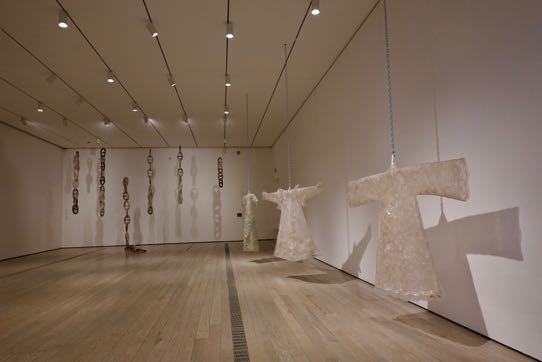
Liang Shaoji, Chains: The Unbearable Lightness of Being, Nature Series, No. 79 (2002–2007); Wang Jin, Chinese Dream (2006) (left to right
Here’s how to do it:
BCAM and new Renzo Piano Building – definitely take the external escalator to the third floor of the Broad Contemporary Art Museum (BCAM) Renzo Piano’s immense red building – it’s really fun to be whisked upwards as the view of the city opens up. The new Academy Museum’s dome is now visible and it’s easy to imagine what a draw the place will be to tourists and Angelenos alike. The escalator stops at the third floor, so walk right outside and admire the tremendous view of the hills. And, to the right, you can track progress of the yet-to-be-opened Academy Museum with a gigantic globe adding to our skyline. Here are plans for that museum.
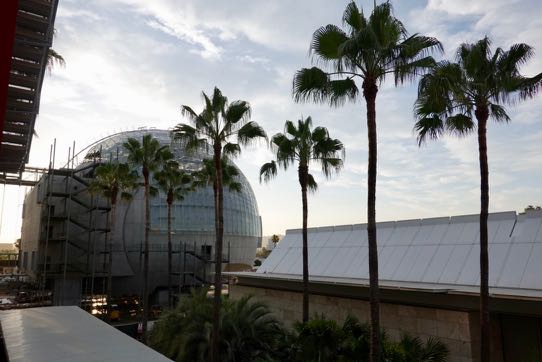
View of new Academy Museum going up, the architect is Renzo Piano
Mary Corse: Head back inside for a quick tour around the new Mary Corse retrospective – beautiful paintings that glow softly white and are serene and elegant to behold.
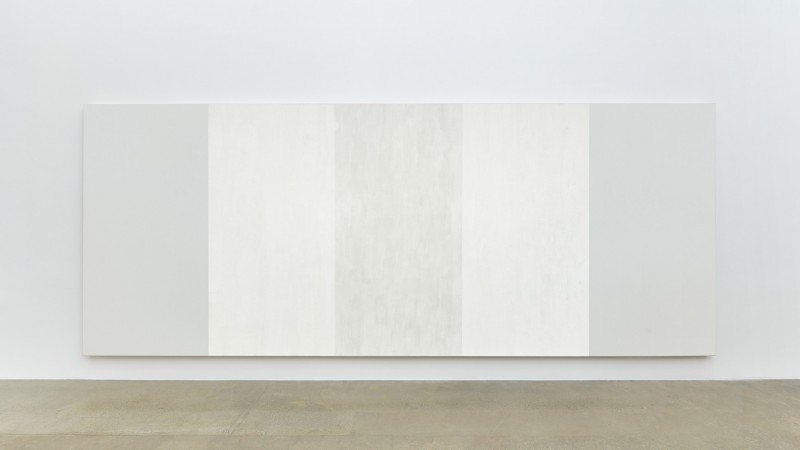
Elevator Art:
Take the huge Barbara Kruger elevator down one level to the show you came to see. Kids can note that the walls inside are dinged here and there, because the museum’s large scale art is moved around in what’s probably the biggest elevator they’ve ever seen. Note her black, white and red statement and describe her billboard-sized poetry. They may have seen it before, and now they know it’s hers. She did all these works BEFORE Twitter!
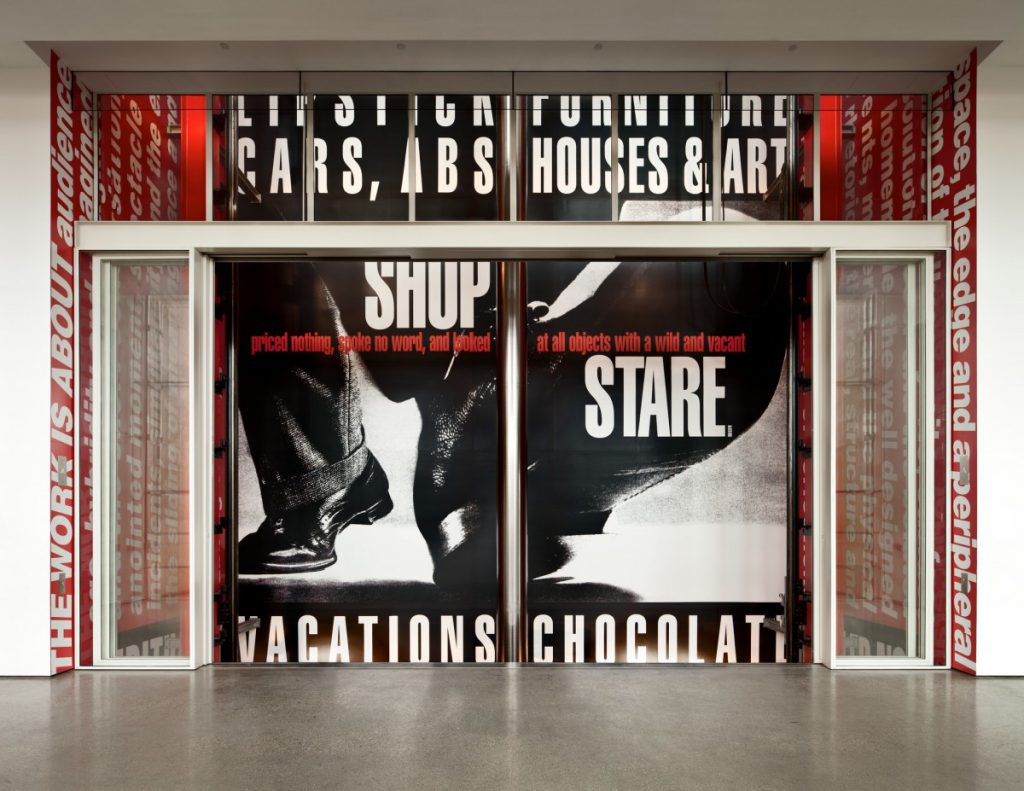
The show itself:
The Allure of Matter is a survey of 34 artists’ work, all created since 1980. (A nice point of comparison is to note that the Mary Corse exhibit one woman’s life time of work). In this case, it’s the materials that are used that will be fun to explore. In the first room, gun powder is used to create a very textured painting, full of depth and character – very different from the flatter, white surfaces of Mary’s paintings. Then, the large rings hanging from the ceiling – which look like pretzels – have been covered with silk by live worms. Don’t worry, no worms remain, but the work of the silkworm is beautiful. The third set of pieces in the first room are incredible traditional gowns, but made from rubber and punched with the detailing.
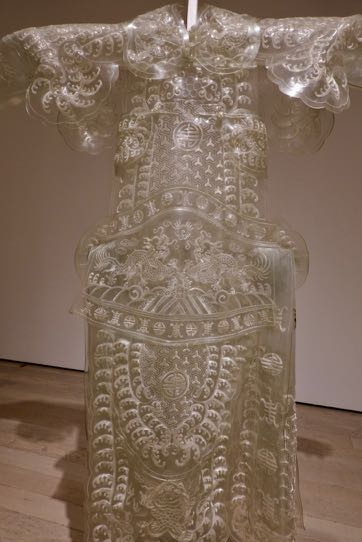
Wang Jin, Chinese Dream (2006)
Next, look for a large yellow white and brown tiger skin rug -it’s made from cigarettes, and you can definitely smell the tobacco.
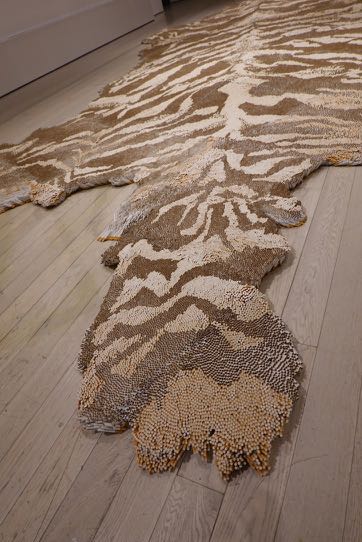
Xu Bing, 1st Class (2011)
Walk all the way around – the cigs change color depending on the angle you view the rug from – much like you’d rub the skin of an animal, the texture changes as it catches the light from various directions. This rug sparks joy on so many levels, despite reeking of tobacco, because the choice of subject and materials are so perfectly paired.
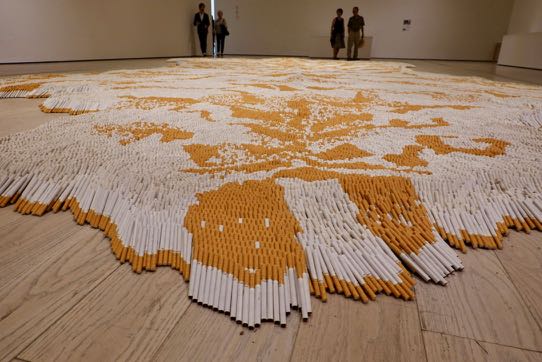
Xu Bing, 1st Class (2011)
Three other pieces are worth examination – kids can go in and out and around a house made from human hair (!)
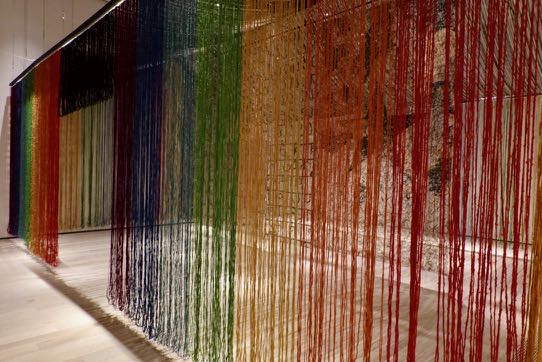
Gu Wenda, united nations: american code (2018–2019)
And, laid across the floor are roof tiles from Beijing with images of the houses that they once covered. Most of these buildings are now gone, and the remaining single images are haunting reminders of how a city changes over time.
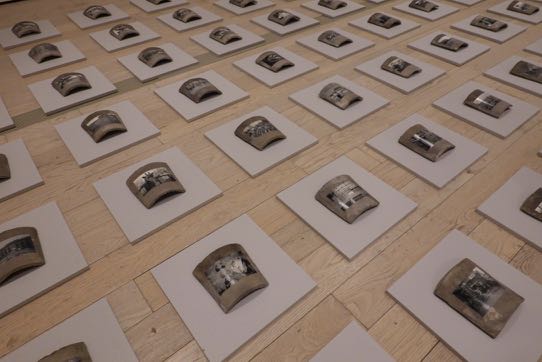
Yin Xiuzhen, Transformation (1997)
…and, finally, look for strings that hang from the ceiling and see how long it takes kids to see the body floating near the ceiling. Each thread comes from a separate point on the body and it’s a shimmering, beautiful result.
Oh – before you go. Take a look at the gross black mass (HeXiangyu’s Cola Project (2008–2012)) that was condensed down from 127 tons of coca cola – an easy reminder that we don’t need sodas (or even fruit juice) in our diets. It was too ugly to photography but leaves an indelible impression!
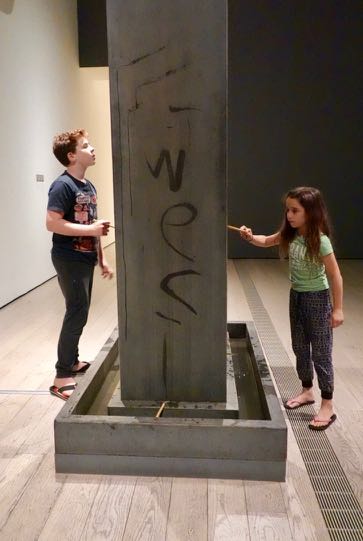
And relax before you go by painting with water on this peaceful fountain. Participation encouraged!

